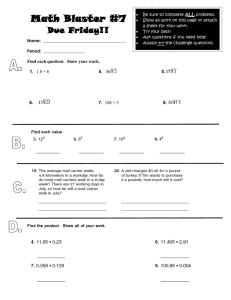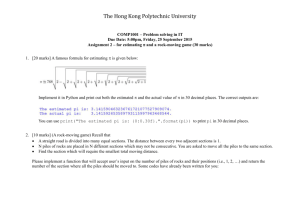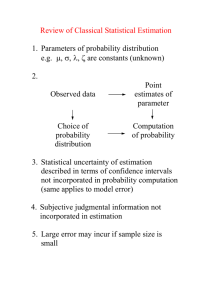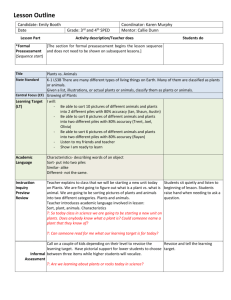Now that 8 playing cards have been illustrated, the dealing game
advertisement
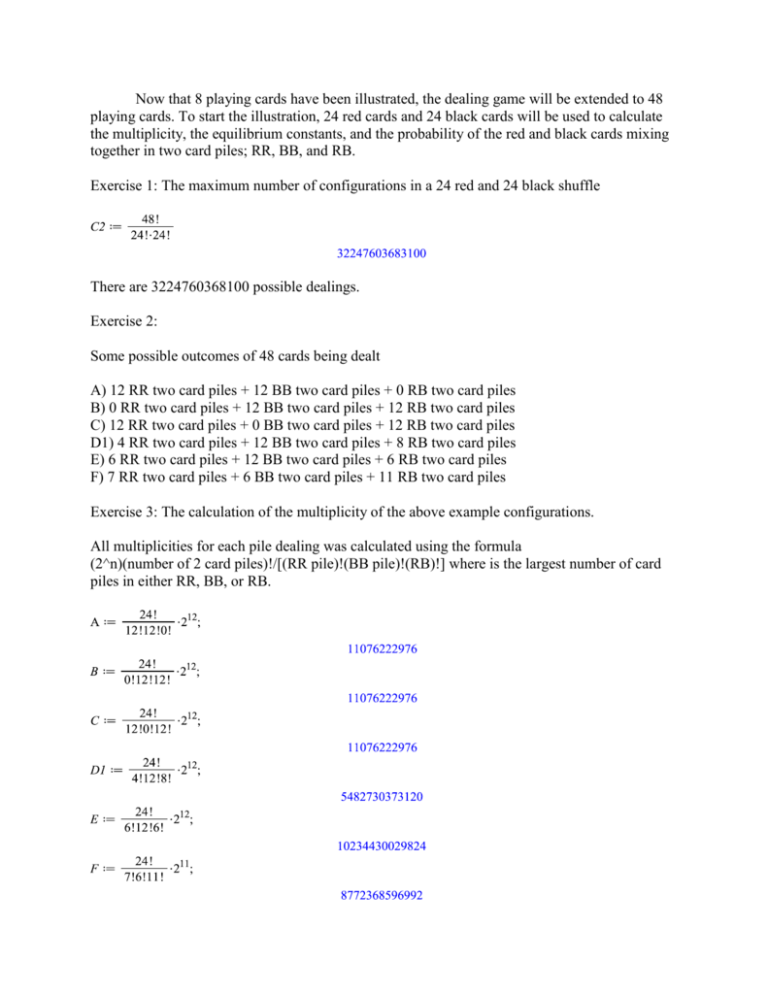
Now that 8 playing cards have been illustrated, the dealing game will be extended to 48 playing cards. To start the illustration, 24 red cards and 24 black cards will be used to calculate the multiplicity, the equilibrium constants, and the probability of the red and black cards mixing together in two card piles; RR, BB, and RB. Exercise 1: The maximum number of configurations in a 24 red and 24 black shuffle There are 3224760368100 possible dealings. Exercise 2: Some possible outcomes of 48 cards being dealt A) 12 RR two card piles + 12 BB two card piles + 0 RB two card piles B) 0 RR two card piles + 12 BB two card piles + 12 RB two card piles C) 12 RR two card piles + 0 BB two card piles + 12 RB two card piles D1) 4 RR two card piles + 12 BB two card piles + 8 RB two card piles E) 6 RR two card piles + 12 BB two card piles + 6 RB two card piles F) 7 RR two card piles + 6 BB two card piles + 11 RB two card piles Exercise 3: The calculation of the multiplicity of the above example configurations. All multiplicities for each pile dealing was calculated using the formula (2^n)(number of 2 card piles)!/[(RR pile)!(BB pile)!(RB)!] where is the largest number of card piles in either RR, BB, or RB. In this 48 total card exercise the 6 RR, 6 BB, and 12 RB dealing led the largest multiplicity of 10234430029824. In the 8 total cards exercise the 1 RR, 1 BB, and 2 RB dealing led the largest multiplicity of 48. Therefore, the equilibrium of nRR + nBB + 2nRB leads the largest multiplicity. Exercise 4: The determination of the equilibrium constants of the card dealings. one possible outcome: 8 RR, 8 BB, 8 RB When using the relationship of RR + BB 2RB the equilibrium constant, Keq, is found using the idea of equilibrium: Keq= [RB]^2/([RR][BB]) So: Other possible outcomes A) 12 RR two card piles + 12 BB two card piles + 0 RB two card piles B) 0 RR two card piles + 12 BB two card piles + 12 RB two card piles C) 12 RR two card piles + 0 BB two card piles + 12 RB two card piles D1) 4 RR two card piles + 12 BB two card piles + 8 RB two card piles E) 6 RR two card piles + 6 BB two card piles + 12 RB two card piles F) 7 RR two card piles + 6 BB two card piles + 11 RB two card piles Error, numeric exception: division by zero Error, numeric exception: division by zero As was observed in the 8 total card dealings, some outcomes are impossible when considered under equilibrium in 48 total card dealings. For an equilibrium to occur in a reaction, some amount of reactant is needed to make some amount of product. Therefore, RR=0 or BB=0 outcomes cannot occur in equilibrium and RB = 0 cause an equilibrium constant of 0. Exercise 5: The possible outcome in exercise 4 above answers the question and shows that the equilibrium constant is the reaction quotient. Therefore, when the multiplicity is the highest the system is at equilibrium. So Q=K=4 Most probable outcome: 6 RR, 6 BB, 12 RB lead a reaction quotient of: The work done below is conducted to determine the probability of the outcome that leads the largest equilibrium constant of 4. Exercise 1: There are 3224760368100 possible dealings. Exercise 2: Some possible outcomes of 48 cards A) 12 RR two card piles + 12 BB two card piles + 0 RB two card piles B) 0 RR two card piles + 12 BB two card piles + 12 RB two card piles C) 12 RR two card piles + 0 BB two card piles + 12 RB two card piles D1) 4 RR two card piles + 12 BB two card piles + 8 RB two card piles E) 6 RR two card piles + 12 BB two card piles + 6 RB two card piles F) 7 RR two card piles + 6 BB two card piles + 11 RB two card piles Exercise 3: All multiplicities for each pile dealing was calculated using the formula (2^n)(number of 2 card piles)!/[(RR pile)!(BB pile)!(RB)!] where is the largest number of card piles in either RR, BB, or RB. In this 48 total card exercise the 6 RR, 6 BB, and 12 RB dealing led the largest multiplicity of 10234430029824. In the 8 total cards exercise the 1 RR, 1 BB, and 2 RB dealing led the largest multiplicity of 48. Therefore, the equilibirum of nRR + nBB + 2nRB leads the largest multiplicity. Error, missing operator or `;` Exercise 4: one possible outcome: 8 RR, 8 BB, 8 RB Other possible outcomes A) 12 RR two card piles + 12 BB two card piles + 0 RB two card piles B) 0 RR two card piles + 12 BB two card piles + 12 RB two card piles C) 12 RR two card piles + 0 BB two card piles + 12 RB two card piles D1) 4 RR two card piles + 12 BB two card piles + 8 RB two card piles E) 6 RR two card piles + 6 BB two card piles + 12 RB two card piles F) 7 RR two card piles + 6 BB two card piles + 11 RB two card piles Error, numeric exception: division by zero Error, numeric exception: division by zero As was observed in the 8 total card dealings, some outcomes are impossible when considered under equilibrium in 48 total card dealings. For an equilibrium to occur in a reaction, some amount of reactant is needed to make some amount of product. Therefore, RR=0 or BB=0 outcomes cannot occur in equilibrium and RB = 0 cause an equilibrium constant of 0. Exercise 5: The possible outcome in exercise 4 above answers the question and shows that the equilibrium constant is the reaction quotient. Therefore, when the multiplicity is the highest the system is at equilibrium. So Q=K=4 Most probable outcome: 6 RR, 6 BB, 12 RB lead a reaction quotient of: The work done below is conducted to determine the probability of the outcome that leads the largest equilibrium constant of 4. > CardsToT24 is a distribution of 24 red cards and 24 black cards In this above table, the first column is the card piles of RR, the second column is the card piles of BB, the third column is the number of card piles of RB, the fourth column is the probability of getting dealt that combination of card piles, and the fifth column is the equilibrium constant for that card pile distribution. The probability of getting dealt a distribution that has an equilibrium constant of 4 is 0.31737025. The equilibrium constant for the isotope exchange H2+D2 2HD at 25 degrees C and 500 degrees C are 3.3 and 3.8, respectively. The above work shows that playing cards cannot be used to determine precise equilibrium constant values. However, the playing card illustration does allow valuable insight into the to determine the probability and approximate equilibrium constants of distributions.
